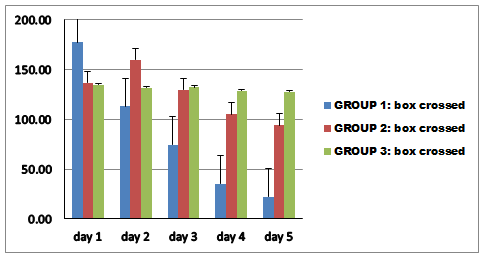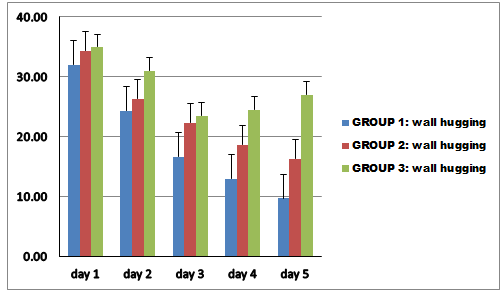Session Information
Date: Sunday, October 7, 2018
Session Title: Other
Session Time: 1:45pm-3:15pm
Location: Hall 3FG
Objective: In the present study we have used various dosing protocols to induce the PD-like symptoms with the administration of rotenone in mice.
Background: Parkinson’s disorder (PD) is among one of the most studied neurodegenerative disorders. PD affects the quality of life and renders patients with severe mobility issues in later stages of the disease. Among pharmacological anti-Parkinson drug targets, researcher are focusing on various receptors such as dopaminergic, cholinergic, adenosine etc. In order to develop better and refined new compounds targeting these receptors, appropriate animal model plays an important role.
Methods: Male NMRI mice were procured from the animal house of Dow University of Health Sciences, Karachi, Pakistan. Animals were divided into various groups, control, rotenone 1.5 mg/kg, rotenone 2.5 mg/kg, rotenone + levodopa (100 mg/kg). The drugs were injected using different protocols as follows: GROUP 1: animals were given daily 3 mg/kg dose of rotenone subcutaneously. GROUP 2: animals were given S/C 3 mg/kg dose of rotenone at alternate days. GROUP 3: animals were given daily 3 mg/kg dose of rotenone I/P. Following parameters were observed: – number of box crossed – time for corner sitting – rearing: number of wall hugging
Results: The results showed that wall hugging was markedly reduced in group 1 from 32 (day 1) to 9 (day 5). However, in group 2 it was decreased by half from 34 (day 1) to 16 (day 5). Group 3 showed slight reduction in wall hugging i.e. from 35 (day 1) to 27 (day 9). Similarly, in box crossed group 1 showed significant effect at day 1 (177) and at day 5 (22). Group 1 and 2 showed significant reduction the no. of box crossed compared to control i.e. half (group 2) to four time (group 1) decrease. The data was analyzed using SPSS v20. (p-values were 0.005, 0.001 unless otherwise mentioned).
Conclusions: The results of our study indicate that daily protocol of rotenone injection via SC route is more effective in causing PD like symptoms as compare to I/P route. While, SC route with alternative dosing protocol is superior to I/P route but lesser in action than daily regimen. Conclusively, we may propose to use SC route in daily dosing for induction of PD symptoms using rotenone.
References: Betarbet, R., Sherer, T. B., MacKenzie, G., Garcia-Osuna, M., Panov, A. V., and Greenamyre, J. T. (2000) Nat. Neurosci. 3, 1301-1306. Sherer, T. B., Kim, J-H., Betarbet, R., and Greenamyre, J. T. (2003) Exp. Neurol. 179, 9-16.
To cite this abstract in AMA style:
M. Raza, N. Zehra, S. Malhi. Rotenone model of Parkinson’s disease: The dosing options in mice revisited [abstract]. Mov Disord. 2018; 33 (suppl 2). https://www.mdsabstracts.org/abstract/rotenone-model-of-parkinsons-disease-the-dosing-options-in-mice-revisited/. Accessed December 8, 2025.« Back to 2018 International Congress
MDS Abstracts - https://www.mdsabstracts.org/abstract/rotenone-model-of-parkinsons-disease-the-dosing-options-in-mice-revisited/


